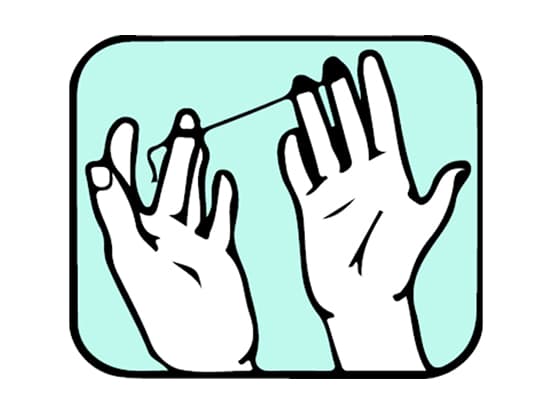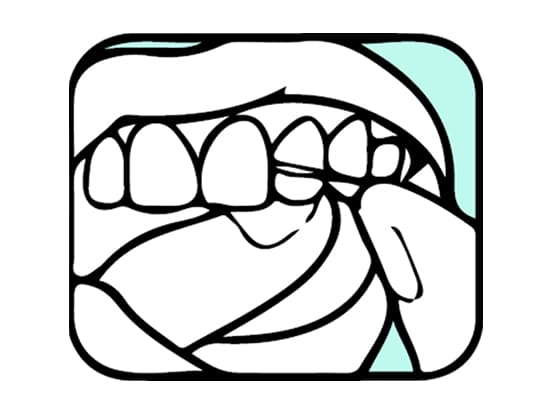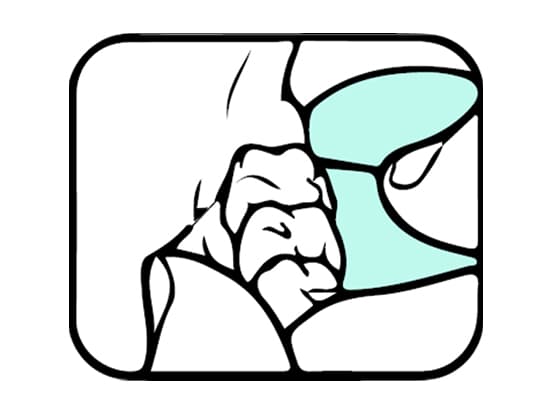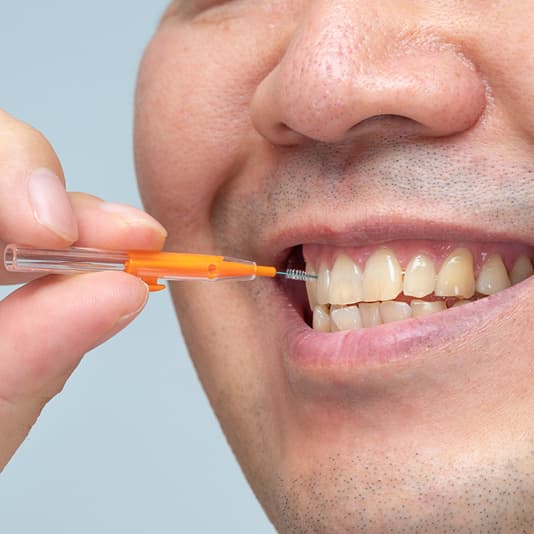How to use dental floss and interdental brushes
Article published on 07/10/21 and clinically reviewed on 21/04/23
When do you reach for the dental floss? Morning, noon, and night? When you have food stuck in your teeth? Or maybe you don't floss because, well, why would you?
The best case to put forward for flossing is the health benefits. Cleaning in between your teeth using dental floss or interdental brushes as part of your daily oral health care routine can help reduce your risk of tooth decay and gum disease.1
Not only that, dental floss and interdental brushes can help remove plaque, get rid of food that’s stuck, reduce the risk of cavities, and may also help reduce bad breath.1
If you're new to flossing or using interdental brushes and not sure where to start, we've produced this handy guide.
How to use dental floss
Dental floss is a thin, soft thread. Dental tape, which you can also find in the dental health aisle in your local supermarket or pharmacy, is thicker.

Step 1
Take a long length of floss, about 45cm, and wind each end around your middle fingers.

Step 2
Wind the floss around the fingers until, when pulled tightly, the floss between each hand is around 3cm to 5cm long.

Step 3
With the floss pulled tightly, slide it between two teeth. Guide it up and down against the surface of the teeth and below the gum line.

Step 4
Continue this process around the mouth, moving methodically from one pair of teeth to the next.
How to use interdental brushes
Interdental brushes have small, bristled heads and are available in a variety of widths to suit the gap size between your teeth. Some brushes have a metal wire holding the bristles, allowing you to bend it to the desired shape. Others have rubber bristles, and you can buy ones with different length handles too, helping to get into the hard-to-reach gaps in your mouth.
Step 1
Choose the right sized interdental brush and style to suit you.
Step 2
Simply insert the interdental brush gently between your teeth and move the full length of the brush back and forth a few times. Do not force the brush into a space; change the size and curve the neck or wire when needed.
Step 3
Then continue throughout your whole mouth and change the brush when the bristles become worn.
Dental floss may be a useful alternative if you find you do not have a large enough gap in between your teeth for an interdental brush to fit.
The NHS recommends that people aged 12 and over use floss or interdental brushes alongside brushing as part of their daily oral health routine2, it's up to you whether you do this in the morning or evening.
Some people may experience tender and bleeding gums when starting a new flossing or interdental brushing routine. If your gums are still bleeding after a few days of daily floss or interdental brush use, please see your dental team to check if you are using them correctly.

This material may contain links to other websites operated by third parties. It is the responsibility of third parties to ensure such material and websites comply with all relevant laws and regulations. To the maximum extent permissible by law Simplyhealth disclaims all responsibility for such websites.